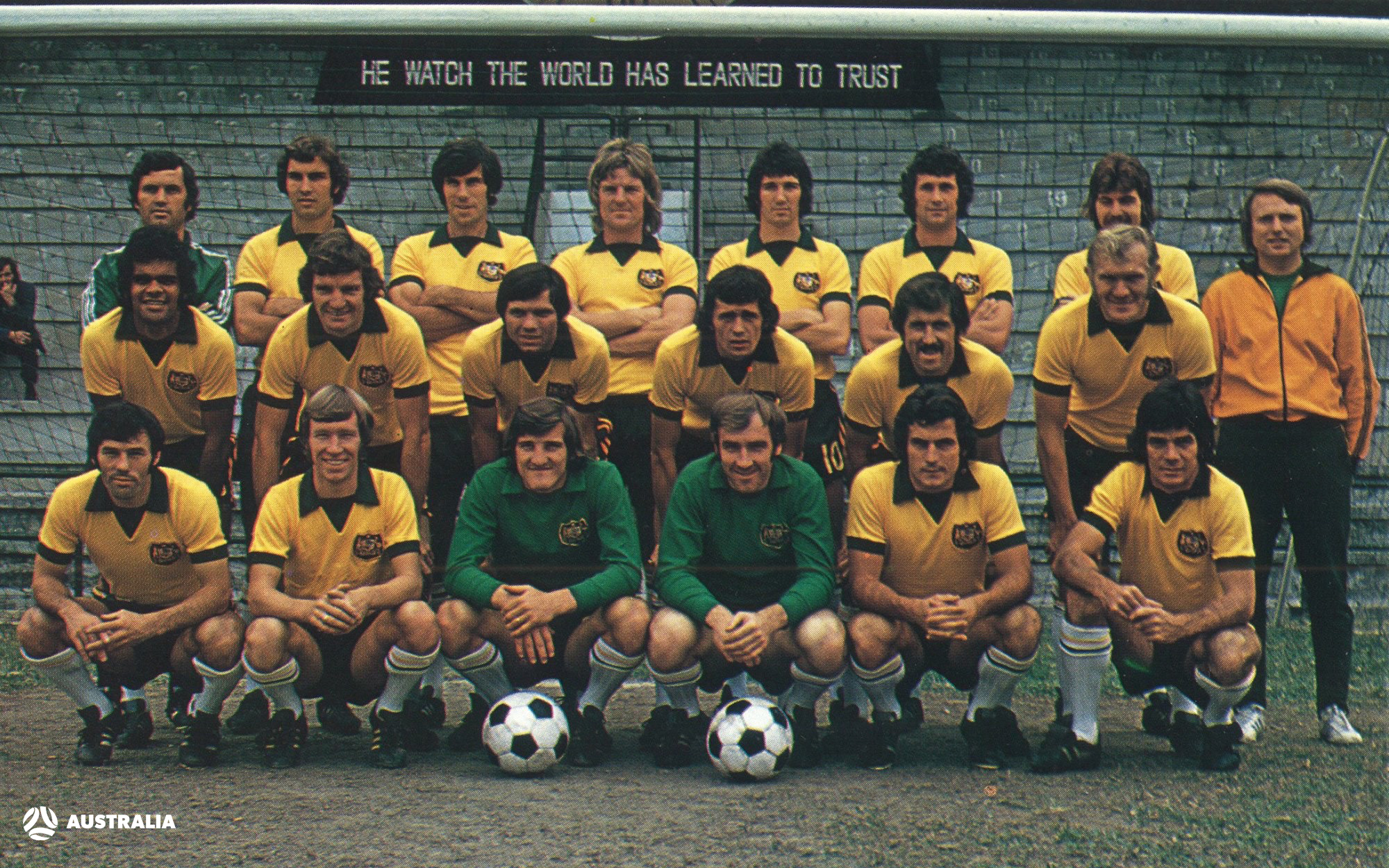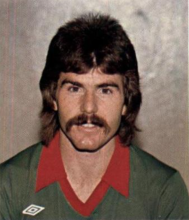When the star-studded Chelsea FC toured Down Under in May 1965 under their mercurial manager, Tommy Docherty, Ernie Campbell played in a curtain raiser for Canterbury under-15s against Sydney Prague.
So impressed was Docherty with the young starlet’s performance, he summoned a meeting with Campbell’s parents. He offered Campbell a contract to return to England to play in the club’s youth team setup along with Colin Miner from the Prague team.
It was an offer that couldn’t be refused, and Campbell was about to start the voyage of a lifetime.
“At the airport in London, Tommy Docherty picked me up in his brand-new Jaguar, and I still remember the beautiful smell of the leather seats,” recalls Campbell.
“After finding accommodation in DIGS, I commenced training with the junior youth team at Hendon five days a week. This was followed by a game on Saturday morning and off to Stamford Bridge to watch the first team when they were playing at home.
“I was in the A youth team and became friendly with two of Chelsea’s future England stars, Peter Osgood and John Boyle.”
It was while he was in England that Campbell was exposed to the 60s rock revolution portrayed by the Beatles, the Who and the Kinks.
It was the era of long hair and fashionable clothing which Campbell strongly identified with.
However, at the end of seven months with Chelsea, Campbell decided to return home despite the club offering him the chance to complete his apprenticeship.
“It was a decision I regret to this day, but the weather compared to Bondi Beach wasn’t exactly attractive, and I did miss home,” Campbell said.
“I also should’ve returned to Europe a few years later but would’ve chosen Italy or Spain because the style of football suited me better than the English long ball game.”

In 1967, Campbell was signed by APIA Leichhardt and, in the same season, was selected to play for New South Wales against the touring Manchester United.
It was the night the eighteen-year-old Campbell walked on the same pitch as United stars Bobby Charlton, Denis Law, and George Best.
“To this day, George Best remains in my mind as the greatest player I ever saw as he had everything and made the game look so easy,” Campbell said.
Success followed Campbell in 1968 when APIA became champions in the NSW State League.
In 1969, they repeated the dose largely due to the brilliance of the man with the long hair and moustache who was now known in football circles as the Fifth Beatle due to his distinct resemblance to George Harrison.
In the grand final against St George, the teams played out a 0-0 scoreline, so a replay was necessary two days later.
In this match, St. George were leading 2-0 with 11 minutes to play, and ironically, it was 1973 Socceroo squad member George Harris who had been given the task of shadowing Campbell that day.
However, when Harris had to leave the field due to cramp with 11 minutes to go, Campbell was released from his shackles. Subsequently, he turned the game around by breaching the St George defence three times in those final fifteen minutes to score a hat-trick, which inspired APIA to an amazing 3-2 win.

In 1971, Campbell was transferred to Marconi-Fairfield, where Socceroo coach Rale Rasic was at the helm.
“I always held the belief if you were going to move clubs, it was best to move to one with a strong squad,” Campbell explained.
Rasic had brought future Socceroo teammates Peter Wilson and Max Tolson to the club, and Ray Richards had been there since 1969.
In 1971, Campbell was selected for his first international against Israel when he came on in the second half.
“It was something I had always aspired to since the days I went to see John Warren, John Watkiss and Brian Smith star for Canterbury at Arlington Oval in NSW Federation competition,” he said.
From that point on to the 1973 World Cup campaign, he was a regular in the Socceroo squad and was instrumental in scoring a late goal against New Zealand in March 1973, which ensured Australia’s progress to the next round against Iran.
In that match, the All Whites scored a shock goal in the 57th minute, but Ernie Campbell scored the critical equaliser five minutes from time when he connected with a Ray Richards long throw at the near post to head the ball home.
After this game, Campbell played against Iraq and Indonesia, and the first-leg match against South Korea in Sydney.
“It was difficult to maintain regular selection with such great players like Alston, Baartz and Abonyi up front,” Campbell said.
“However, I was always there to give my best when called upon and importantly, I was performing well at club level to justify selection.
“When November 13th arrived, the atmosphere was intense because we’d just achieved the 2-2 draw against South Korea and had very little time to prepare for the deciding match in Hong Kong.
“When Jimmy Mackay smashed that volley into the keeper’s top right corner, everybody was stunned, and I felt numb.
“It didn’t sink in immediately that now I was going to a World Cup Final series, something my idol George Best never achieved.
“That long campaign over eight months was now all worthwhile.”
Campbell played in the second match against West Germany in the World Cup Finals. After the team was eliminated in the first round, a company was so impressed with the Socceroos’ performances that they arranged for the squad to attend the final between Germany and the Netherlands.
Unfortunately, the Australian Soccer Federation organised for the squad to return to Australia before the final.
“I remember Max Tolson and I sitting on the bench at Hurstville Oval on the afternoon of the final, lamenting the fact we weren’t in Munich watching the big match,” Campbell said.
Many people of his era believed that Ernie Campbell had rare talents and should’ve played for Australia many more times than his 15 full internationals and 10 friendly internationals.
His former teammate, Socceroo great Ray Richards, said that most players had to work their socks off to achieve success, while Campbell was blessed with unlimited natural ability, so his performances were instinctive.
Former Socceroo goalkeeper, APIA and Marconi teammate Bill Rorke described Campbell as one of the most gifted players he ever saw.
“His pace and close control of the ball over the first 10 metres was electrifying,” Rorke said.
For the average supporter who witnessed his ability to run at defenders at close quarters on the line while maintaining inch-perfect possession of the ball, the memories never fade.
So why didn’t Campbell make more appearances for the national team?
Campbell answers in this way:
“All I wanted to do was play, and I was a very poor trainer because I found it boring,” Campbell explained.
“Rale Rasic used to say that as long as I performed on match day for Marconi, he would overlook my reluctance to commit fully in training.
“Yet in the national team, he may have required that extra effort, which may have been a weakness of mine.”
Nevertheless, the memories of the heroics Ernie Campbell exhibited on match day, particularly in his time at APIA, will live eternally in the minds of the supporters who worshipped the Fifth Beatle.

